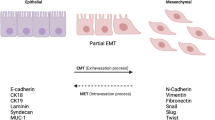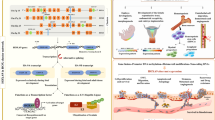Abstract
SOX9 gene encodes a transcription factor essential for a central role in the development and differentiation of multiple cell lineages, such as in neurogenesis, neural crest development, etc. Recent study reported that overexpression of SOX9 mRNA is closely associated with poor clinical outcome of patients with malignant gliomas. In the present study, we have explored the regulatory role of SOX9 in glioma metastasis. To investigate the role of SOX9 in glioma metastasis, SOX9 overexpressed in human glioma cell line U251 on cell migration and invasion was evaluated via wound scratch, Transwell assay without or with Matrigel. SOX9-induced changes in EMT process were evaluated by Western blot. Furthermore, the role of β-catenin in the regulatory effect of SOX9 on cell migration and invasion, and EMT process was explored by suppressing β-catenin expression in SOX9-overexpressed U251 cells. SOX9 overexpression in U251 cells resulted in a significant increase in cell migration and invasion. SOX9 overexpression also markedly promoted the EMT process. More importantly, our results revealed that SOX9 stimulated metastasis through activating Wnt/β-catenin signaling. In summary, this study indicated that the promoting effect of SOX9 on glioma metastasis was, at least in part, through Wnt/β-catenin signaling. The findings in this study highlight the effectiveness and therapeutic potential to utilize SOX9 targeted strategies in the treatment of glioma.




Similar content being viewed by others
References
Wei, J., Gabrusiewicz, K., & Heimberger, A. (2013). The controversial role of microglia in malignant gliomas. Clinical and Developmental Immunology, 2013, 285246.
Kettenmann, H., et al. (2011). Physiology of microglia. Physiological Reviews, 91(2), 461–553.
Steeg, P. S. (2006). Tumor metastasis: Mechanistic insights and clinical challenges. Nature Medicine, 12(8), 895–904.
Li, X., et al. (2013). SOX2 promotes tumor metastasis by stimulating epithelial-to-mesenchymal transition via regulation of WNT/beta-catenin signal network. Cancer Letters, 336(2), 379–389.
Hersmus, R., et al. (2008). FOXL2 and SOX9 as parameters of female and male gonadal differentiation in patients with various forms of disorders of sex development (DSD). Journal of Pathology, 215(1), 31–38.
Jay, P., Berta, P., & Blache, P. (2005). Expression of the carcinoembryonic antigen gene is inhibited by SOX9 in human colon carcinoma cells. Cancer Research, 65(6), 2193–2198.
Thomsen, M. K., et al. (2010). SOX9 elevation in the prostate promotes proliferation and cooperates with PTEN loss to drive tumor formation. Cancer Research, 70(3), 979–987.
Kimura, M. S., Mutoh, H., & Sugano, K. (2011). SOX9 is expressed in normal stomach, intestinal metaplasia, and gastric carcinoma in humans. Journal of Gastroenterology, 46(11), 1292–1299.
Chakravarty, G., et al. (2011). Prognostic significance of cytoplasmic SOX9 in invasive ductal carcinoma and metastatic breast cancer. Experimental Biology and Medicine (Maywood), 236(2), 145–155.
Sutter, R., et al. (2010). Cerebellar stem cells act as medulloblastoma-initiating cells in a mouse model and a neural stem cell signature characterizes a subset of human medulloblastomas. Oncogene, 29(12), 1845–1856.
Schlierf, B., et al. (2007). Expression of SoxE and SoxD genes in human gliomas. Neuropathology and Applied Neurobiology, 33(6), 621–630.
Wang, L., et al. (2012). Oncogenic role of SOX9 expression in human malignant glioma. Medical Oncology, 29(5), 3484–3490.
Shi, G., et al. (2013). Expression and functional role of Sox9 in human epidermal keratinocytes. PLoS One, 8(1), e54355.
Jung, M., et al. (2007). In search of suitable reference genes for gene expression studies of human renal cell carcinoma by real-time PCR. BMC Molecular Biology, 8, 47.
Zhao, J. H., et al. (2011). Knockdown of beta-catenin through shRNA cause a reversal of EMT and metastatic phenotypes induced by HIF-1 alpha. Cancer Investigation, 29(6), 377–382.
Wang, H., et al. (2013). SOX9 regulates low density lipoprotein receptor-related protein 6 (LRP6) and T-cell factor 4 (TCF4) expression and Wnt/beta-catenin activation in breast cancer. Journal of Biological Chemistry, 288(9), 6478–6487.
Galera-Ruiz, H., et al. (2012). WNT pathway in laryngeal squamous cell carcinoma and nasopharyngeal carcinoma. Acta Otorhinolaryngologica Italica, 32(2), 122–123.
Fu, Y., et al. (2011). Beta-catenin as a potential key target for tumor suppression. International Journal of Cancer, 129(7), 1541–1551.
Valenta, T., Hausmann, G., & Basler, K. (2012). The many faces and functions of beta-catenin. EMBO Journal, 31(12), 2714–2736.
Capaccione, K. M., et al. (2014). Sox9 mediates Notch1-induced mesenchymal features in lung adenocarcinoma. Oncotarget, 5(11), 3636–3650.
Yang, J., & Weinberg, R. A. (2008). Epithelial–mesenchymal transition: At the crossroads of development and tumor metastasis. Developmental Cell, 14(6), 818–829.
Polette, M., et al. (2007). Beta-catenin and ZO-1: Shuttle molecules involved in tumor invasion-associated epithelial–mesenchymal transition processes. Cells Tissues Organs, 185(1–3), 61–65.
Brabletz, T., et al. (2001). Variable beta-catenin expression in colorectal cancers indicates tumor progression driven by the tumor environment. Proceedings of the National Academy Sciences USA, 98(18), 10356–10361.
Author information
Authors and Affiliations
Corresponding author
Rights and permissions
About this article
Cite this article
Liu, H., Liu, Z., Jiang, B. et al. SOX9 Overexpression Promotes Glioma Metastasis via Wnt/β-Catenin Signaling. Cell Biochem Biophys 73, 205–212 (2015). https://doi.org/10.1007/s12013-015-0647-z
Published:
Issue Date:
DOI: https://doi.org/10.1007/s12013-015-0647-z




